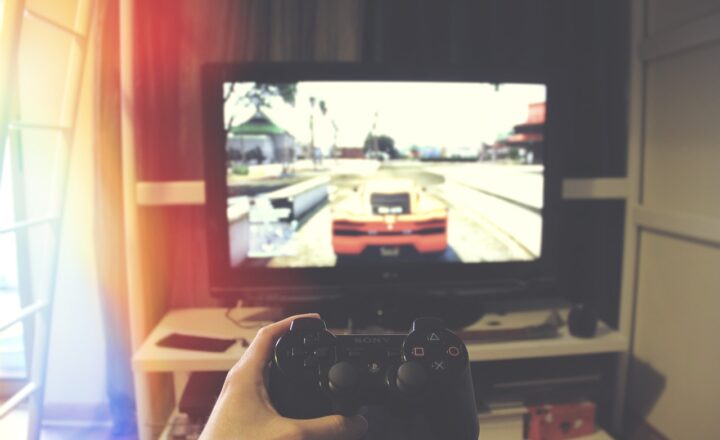
In the era of digital content creation, streaming has exploded in popularity, with platforms like Twitch, YouTube, and Facebook Gaming leading the charge. While having a high-budget setup can enhance the streaming experience, it’s entirely possible to kickstart your streaming career without breaking the bank. This guide will provide you with practical tips on how to establish a low-budget streaming setup without sacrificing quality.
1. Understanding Your Needs
Before diving into gear and software, it’s critical to identify what you want to achieve with your stream. Are you gaming, hosting interviews, creating educational content, or just chatting with your audience? This will help you determine what equipment and software are necessary. Here are some questions to consider:
- What type of content will you create?
- What platforms will you be streaming on?
- Do you plan on interacting with viewers or focusing on gameplay?
Establishing your goals will guide your decisions when sourcing affordable gear and software.
2. Essential Streaming Equipment
Investing in quality equipment is paramount, but it doesn’t have to be expensive. Here’s a breakdown of essential gear you need:
A. Webcam
While many gamers stream with just gameplay footage, adding a webcam can enhance your viewer engagement. Consider these options:
- Logitech C920: A widely recommended HD webcam that offers excellent quality.
- Smartphone as a Webcam: If you have a decent smartphone, you can use it as a webcam with apps like EpocCam or DroidCam, drastically lowering your setup costs.
B. Microphone
Good audio quality is critical; poor sound can drive viewers away faster than bad video. Consider the following:
- USB Microphones: The Blue Yeti and HyperX QuadCast are popular choices that won’t break the bank.
- Lavalier Microphone: Affordable and portable, lavalier mics can offer decent quality for specific setups, particularly for IRL streams.
C. Lighting
Good lighting can make a significant difference in video quality. Here are a few budget-friendly ideas:
- Natural Light: Position your streaming setup near a window during the day for great lighting.
- Softbox Lights: These provide even lighting and are available at a reasonable price on platforms like Amazon.
- LED Ring Lights: Affordable and effective, ring lights create flattering illumination for your face.
D. Streaming Computer or Console
Whether you’re streaming from a PC or a console, your setup must handle resource requirements smoothly. For PC streaming:
- Look for a decent graphics card and processor; consider upgrading components whenever necessary for an affordable boost in quality.
- If console gaming, many consoles like the PS4 and Xbox One offer built-in streaming capabilities that allow you to get started with minimal investment.
3. Software for Streaming
Choosing the right software is critical for your streaming experience, enabling you to customize layouts, overlays, and interactions. Here are several free or low-cost options:
- OBS Studio: Open Broadcaster Software (OBS) is a free, open-source option that provides extensive customization capabilities, perfect for beginners and professionals alike.
- Streamlabs OBS: A user-friendly version of OBS tailored specifically for streamers, it offers a range of built-in features and alerts, allowing easy setup of overlays and widgets.
- XSplit: While offering a premium version, XSplit’s free tier provides solid functionality for new streamers without overwhelming them with features.
These applications often integrate with cloud services to save configurations and settings, making setup easier across multiple devices.
4. Optimizing Your Stream Settings
After you have your gear and software ready, fine-tuning your streaming settings is essential for quality:
- Resolution and Bitrate: Find the sweet spot for resolution (720p is often a great starting point) and bitrate that balances quality with your internet capability. Use tools like Twitch’s bitrate calculator for reference.
- Frame Rate: Maintain a frame rate of at least 30 frames per second to ensure smooth motion during gameplay. For highly dynamic games, consider 60fps if your setup allows it.
- Test Your Stream: Before going live, conduct test streams to check audio levels, visuals, and overall performance. Adjust the settings according to feedback from friends and viewers until you get it right.
5. Engaging with Your Audience
Creating content is only part of the streaming experience; engagement is key to growing your channel. Here are some low-cost ways to keep your audience involved:
- Use Chat Features: Monitor your chat actively. Respond to questions and comments to build a community feeling with your viewers.
- Host Giveaways: Offering small prizes unrelated to your stream can encourage viewers to stay engaged and attract new viewers when shared on social media.
- Schedule Regular Streams: Consistency is key in building a loyal viewer base. Set a streaming schedule that is manageable for you to develop familiarity with your audience.
Engagement doesn’t have to be costly; it’s often more about the time you invest in interacting with your viewers.
Conclusion
Streaming on a budget is entirely feasible with thoughtful planning and resourceful solutions. Focus on your goals, select quality essential equipment, optimize your software settings, and engage with your audience genuinely. By understanding how to create a low-budget streaming setup without sacrificing quality, you can launch your streaming career today. With dedication and creativity, you can turn your passion into a thriving community of viewers ready to tune in to your content.
Start your journey, invest wisely, and remember that quality isn’t just about the gear—it’s about the content and your connection with your audience.







